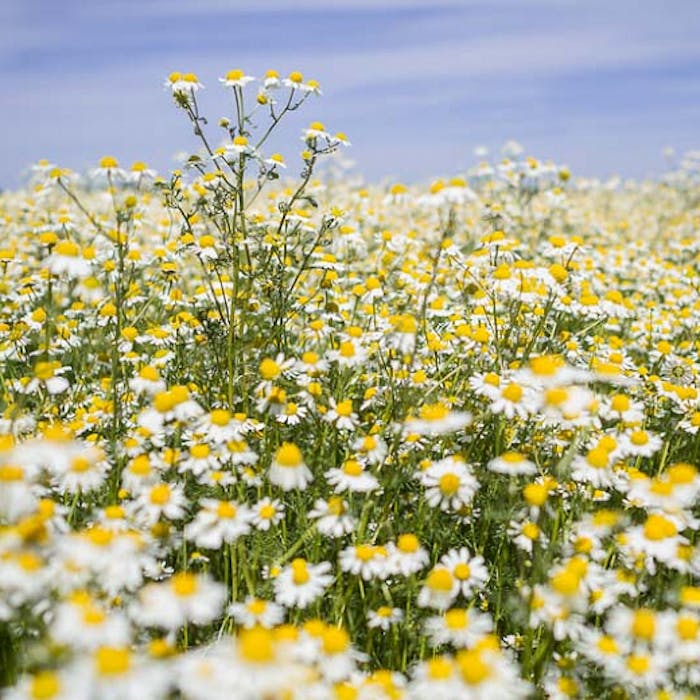
Chamomile - a disappearing wild treasure
The daisy-like perennial wild plant chamomile is low-growing and spreads by the rhizome stems that it sends out underground horizontally. It has a fresh apple scent when crushed, and for this reason, the Elizabethans planted Chamomile lawns and seats.
Chamomile used to be fairly common in the wild in Britain, but it is now only found in a few areas of southern England, notably the south-west and the New Forest. It prefers mown or grazed grassland in open places, such as sandy heaths, cricket pitches, coastal cliff-tops or open glades in light woodland.
A member of the daisy family, chamomile flowers from June to August. It has a composite disc-shaped flower head that consists of tiny flowers in the form of disc florets (the yellow 'centre') and ray florets (the white 'petals'). Its leaves are small, feathery and much-divided.
The plant spreads by sending out new roots from the nodes of the rhizomes, down into the soil. They also shoot new stems up to the surface out of the nodes. This rhizome activity represents a form of plant reproduction. These underground plant parts also store nutrients.
Sadly, this pretty flower is classified as vulnerable and is therefore considered to be facing a high risk of extinction in the wild. Its decline has been caused by clearance of heaths, drainage of winter-wet grasslands, loss of pastures to arable fields, and reduced grazing on commons.
The Chamomile flowers used commercially for tea, shampoo and poultices are mainly from the double variety flore-pleno. However, flowers from the wild variety are almost as good. Tea can be made from the fresh or dried flower heads. The plant has also been used as a traditional medicine to treat colds, as an anti-inflammatory and a calming agent.
Further reading
Links to external websites are not maintained by Bite Sized Britain. They are provided to give users access to additional information. Bite Sized Britain is not responsible for the content of these external websites.
